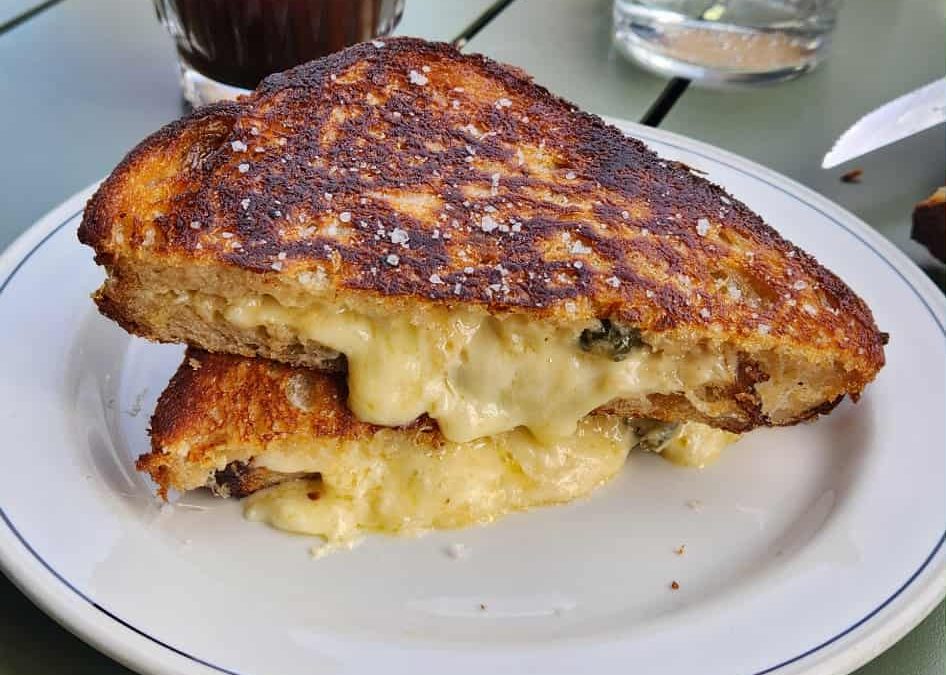
Struggling with food and your body? How CBT-E Can Help.
March 14, 2025Tips for Eating When You Just Don’t feel Like Eating

Simple meals like a sandwich can be a helpful option when you're not feeling hungry but still need to eat.
What to Eat When You’re Not Hungry
There are times when the thought of food feels overwhelming or even repulsive. You might not feel physically hungry. You might feel nauseous just thinking about eating. This is really common when you’re in recovery, but also some people are just naturally more prone to lose their appetite in times of stress.
But your body still needs food!
Even when you don’t have an appetite, your brain, muscles, and organs still need a steady supply of energy to function and keep you alive and healthy. Skipping meals can actually make you feel worse, creating fatigue, worsening low mood and anxiety, and increasing the severity of disordered thoughts.
So, what do you do when nothing looks good enough to eat but eat you must?
Here are some gentle, practical suggestions that many of my clients find helpful:
🧃 1. Start with fluids
When solid food feels like too much, fluids can come to the rescue:
-
Try smoothies (pre-made or homemade, it really doesn’t matter)
- Protein Shakes with milk or mylk
-
Flavoured milks in general
-
Juice
-
Warm drinks with some nutrition (like hot chocolate or a latte)
-
Supplement drinks (like Sustagen, Ensure, or similar)
Sipping something is a way to signal safety to your body and mind, reminding it that it’s okay to eat.
🍞 2. Stick to familiar foods
Most people have their ‘comfort’ foods. It’s the foods that you can pretty much eat anytime anywhere and maybe even associate them with a sense of peace and comfort.
Try:
-
Toast with a butter, jam, peanut butter or vegemite
-
Pasta or rice
-
A sandwich with mild fillings (cheese, egg, chicken, hummus)
-
Crackers or dry cereal
-
Mashed potato
Go with what feels most “neutral”, even if it’s not a full meal or not a balanced meal. Eating something is always better than eating nothing.
⏰ 3. Eat by the clock
If you’re not feeling your hunger cues, rely on structure instead.
Aim for something small every 3 hours, even if it’s just a snack. You can think of it as medicine rather than a meal. The goal isn’t fullness or satisfaction right now; it’s some nourishment for your brain and body.
🍽️ 4. Use visual portions or “default” meals
When decision-making feels too hard, take out the guesswork.
Have a few go-to meals or snacks that you don’t have to think about. This might be:
-
A supermarket sandwich
-
A ready meal/frozen meal
-
A bowl of cereal with milk
-
Leftovers from last night’s dinner
- Takeaway
It’s okay to eat the same thing on repeat if that’s what helps you get through.
👯 5. Eat with someone, or while doing something gentle
Sometimes a bit of distraction or company makes eating easier. You can try eating something while:
-
Watching your favorite TV show
-
Listening to a podcast
-
Sitting with someone you love and chatting away while eating
-
Wrapping yourself in a blanket and making it cozy while you slowly get through your bowl of food
You won’t be doing this forever, but for now try to make it as tolerable as possible.
❤️ 6. Be kind to yourself
If all you managed today was a few crackers and a smoothie, that still counts. If you pushed through the discomfort and had half a sandwich, that’s a win! Every bite is an act of self-care, and every meal is a step toward healing.
Recovery isn’t perfect. It’s messy and brave. You are doing something hard and that matters more than getting it “right”.



